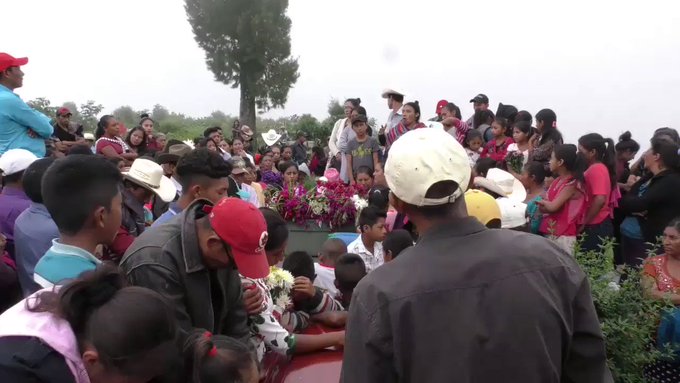by Deep Green Resistance News Service | Jun 22, 2018 | Agriculture
Legislation Guts Endangered Species Act, Clean Water Act, Public Lands Protections
by Center for Biological Diversity
WASHINGTON— In a narrow vote, on June 21 the U.S. House of Representatives passed a 2018 Farm Bill that contains an unprecedented provision that would allow the killing of endangered wildlife with pesticides.
With every Democrat and 20 Republicans voting in opposition, H.R. 2, the so-called Agriculture and Nutrition Act of 2018, passed by a vote of 213 to 211. Two Republicans abstained from voting.
“House Republicans just put killer whales, frogs and hundreds of other species on the fast track to extinction,” said Brett Hartl, government affairs director at the Center for Biological Diversity. “This is a stunning gift to the pesticide industry with staggeringly harmful implications for wildlife.”
The legislation would also eliminate the requirement that the U.S. Fish and Wildlife Service analyze a pesticide’s harm to the nation’s 1,800 protected species before the Environmental Protection Agency can approve it for general use. A separate provision would eliminate the Clean Water Act’s requirement that private parties applying pesticides directly into lakes, rivers and streams must first obtain a permit.
During this session of Congress, the pesticide industry has spent more than $43 million on congressional lobbying to advance these provisions.
In addition to giveaways to the pesticide industry, H.R. 2 includes a sweeping provision that would gut environmental protections for national forests to expedite logging and mining, including eliminating nearly all protections for old-growth forests in Alaska. The legislation contains nearly 50 separate provisions that would eliminate all public input in land-management decisions provided by the National Environmental Policy Act.
“This farm bill should be called the Extinction Act of 2018,” said Hartl. “If it becomes law, this bill will be remembered for generations as the hammer that drove the final nail into the coffin of some of America’s most vulnerable species.”
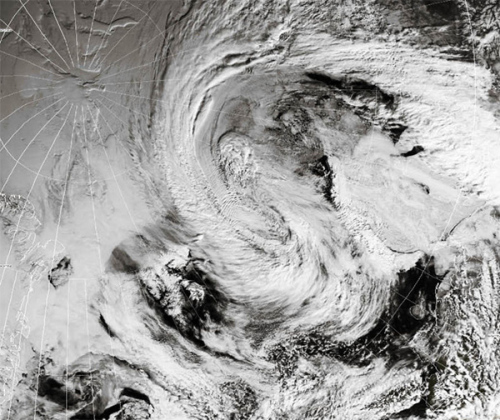
by Deep Green Resistance News Service | Jun 20, 2018 | Climate Change
by Robert Doublin / Deep Green Resistance
Atmospheric greenhouse gases continue inexorable rise – 2017 was sixth consecutive year CO2 rose by 2 ppm or more
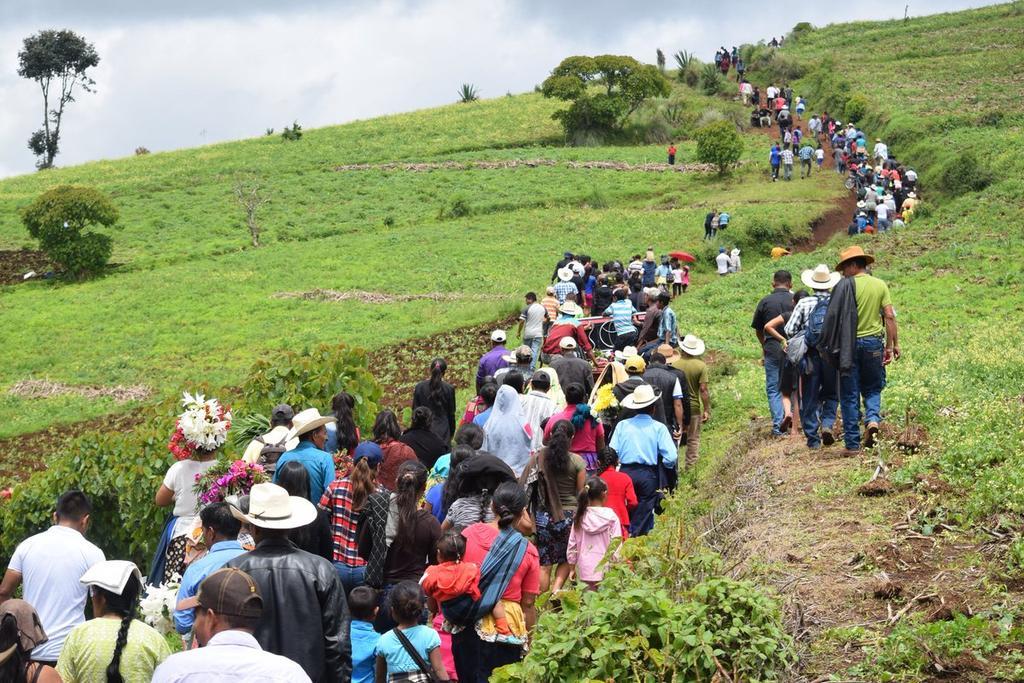
by Deep Green Resistance News Service | Jun 18, 2018 | Colonialism & Conquest, NEWS
Featured image: CODECA members march to Guatemala City from their communities to march on June 12, 2018. By @GtCodeca on Twitter.
by Cultural Survival
In the past week three human rights defenders from the Campesino Development Committee have been killed, totaling seven fatal attacks on human rights defenders in Guatemala over the past four weeks.
CODECA (by its Spanish acronym) is an Indigenous-led grassroots human rights organization that fights for Indigenous and campesino rights in Guatemala. Its main goals include improving working and living conditions of the rural poor, fighting against exploitative energy companies and engaging in political advocacy.
On June 8, 2018, Francisco Munguia was found hacked to death by machete in the Jalapa region in eastern Guatemala. Munguia, a member of the marginalized Indigenous Xinca nation in Guatemala, was the community vice president of CODECA in the village of Divisadero Xalapan Jalapa.
This comes four days after Florencio Pérez Nájer and Alejandro Hernández García, were found dead by machete attack on June 4, 2018. As human rights defenders for CODECA, they mainly advocated for farmers’ labor rights, land reform and the nationalization of electric energy.
Last month, the regional director of CODECA, Luis Arturo Marroquín, also Xinca, was fatally shoton May 9, 2018 in San Luis Jilotepeque central square when he was on his way to a training of Indigenous women. This came only a week after president Jimmy Morales made a speech that publicly defamed CODECA, which CODECA leaders believe “strengthen[ed] hatred and resentment” towards their organization.
In response to the murder of their colleagues, CODECA issued a press release, saying “While the murder of our friends hurts us dearly, it will never intimidate us. We will fight harder and more united to reach our goals and those of our deceased defenders and friends.”
In a speech from the community cemetery in Xinca territory of Xalapán, Thelma Cabrera Perez, National Director of CODECA, declared, “What we demand is the defense of our rights and to live a dignified life [and] when we organize ourselves to defend our rights, that is when we are persecuted.”
Victoria Tauli-Corpuz, the United Nations Special Rapporteur on the rights of Indigenous Peoples condemned these murders in an op-ed in the Washington Post last week, calling them evidence of institutionalized racism against Guatemala’s Indigenous Peoples. The UN has also called out Guatemala in the past for its criminalization and imprisonment of human rights defenders. Guatemala has received 17 recommendations from UN member states through the Universal Periodic Review system to combat this wave of violence; for example,
In 2012, Australia recommended Guatemala to: “Ensure effective and independent investigations into all reports of extrajudicial executions and ensure that reports of killings, threats, attacks and acts of intimidation against human rights defenders and journalists are thoroughly and promptly investigated and those responsible brought to justice’’
Often times, murders of Indigenous activists are not featured in mainstream news or media outlets, despite Indigenous activists constituting 40 percent of environmental activists murdered worldwide last year.
On June 12, 2018, CODECA supporters marched in protest to Guatemala City to “demand justice for the murder of their colleagues” and call for the resignation of president Jimmy Morales. They demand a fair investigation into the murders of those killed.
CODECA tweeted, “From the fields to the city, our southern contingency at the Trébol begins to organize. We demand justice for the assassination of our defenders; we demand the resignation of Jimmy Morales, his inept cabinet, and corrupt congressmen.”

CODECA is one of Cultural Survival’s grant partners for the community media grants project, through which it receives support for its radio programs on Indigenous Peoples’ rights, decolonization, and the establishment of a plurinational democratic nation.
Cultural Survival stands in solidarity with CODECA and firmly condemns these murders of Indigenous human rights defenders. We call for an immediate investigation into the pattern of violence against human rights defenders in Guatemala, in line with international human rights recommendations.
We join Amnesty International in demand authorities:
-
Initiate a prompt, impartial and thorough investigation on the recent killings of human rights defenders from CODECA and CCDA. The investigation should include the theory of the attack being a possible retaliation for their legitimate activities as human rights defender.
-
Guarantee the safety of all CODECA and CCDA members at risk in accordance with their wishes;
-
Condemn the killings and publicly recognize the important and legitimate work of all human rights defenders in Guatemala and refrain from using language that discredits, stigmatizes, abuses, disparages or discriminates them.
Take Action:
https://www.amnestyusa.org/urgent-actions/urgent-action-update-two-more-land-defenders-killed-guatemala-ua-97-18/
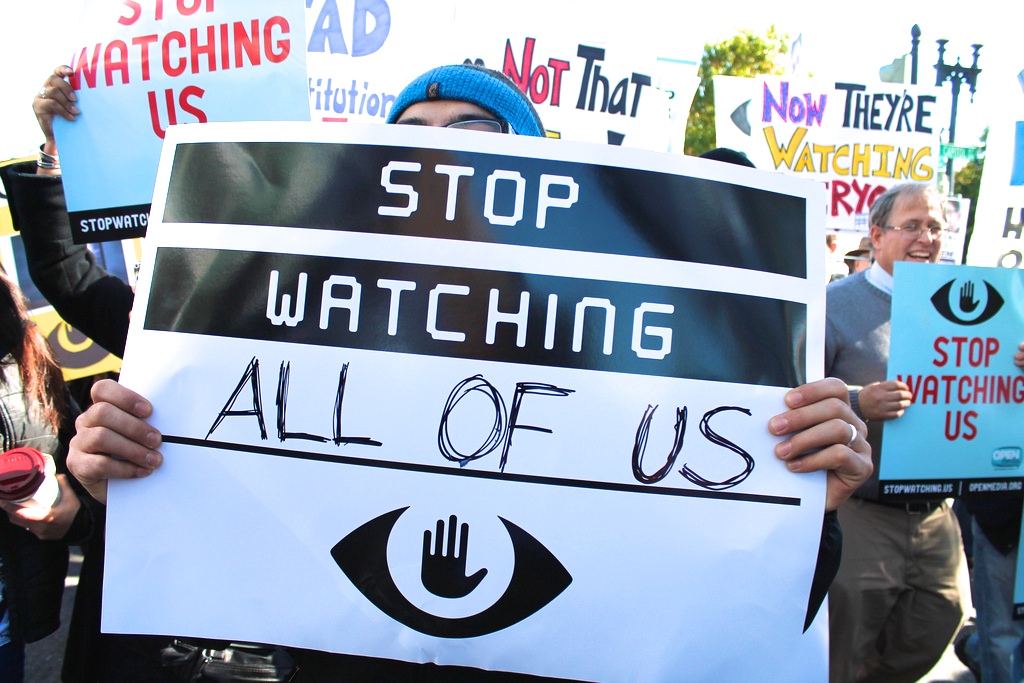
by Deep Green Resistance News Service | Jun 17, 2018 | Movement Building & Support
by Max Wilbert / Deep Green Resistance
Lately, I have been writing a series of introductory articles on the importance of skills and equipment for revolutionaries. Part of my thesis is that gaining skills and gathering equipment is important not only for practical reasons, but also because it opens up new possibilities and removes barriers in our thinking that we didn’t even know were there.
The situation is similar when it comes to digital communication.
We all know that we live in a world of ubiquitous surveillance. Most of us walk around every day with a phone in our pockets that is constantly tracking our location and sending that data to corporations, who bundle it and sell it to the highest bidder. All our web traffic is monitored and recorded, as are our phone calls, text messages, emails, video chat calls, and so on.
Political dissidents are an especially high-priority target.
This surveillance leads to a form of self-censorship whereby we don’t discuss important topics essential to developing resistance organizations and planning and carrying our revolutionary actions.
The only final solution is to dismantle the surveillance system and the institutions (capitalism, patriarchy, empire-culture, civilization) that depend on and lead to it. But pending that outcome, we can fight back in other ways. Here are a series of concrete recommendations for upping your privacy and security game.
Once again, this is an introduction to this topic, and isn’t meant to be comprehensive. Do your own research and be cautious.
Use a VPN or Tor for everyday web browsing
A VPN, or Virtual Private Network, adds a reasonable level of privacy and security to everyday web browsing. Look for a well-regarded platform that doesn’t keep any logs and is not based in the United States or in the territory of close allies. These are cheap and essential in the age when net neutrality is dead, and one subscription can work for multiple devices (laptop, tablet, phone, etc.). Take one hour to purchase and start using a VPN as a priority action.
To bring your security to a higher level, use Tor Browser. Tor is not only essential for high risk online activities, but for normalizing privacy for everyone using the web. It’s easy to use side by side with your regular web browser.
Encrypt data
Almost all phones, tablets, and computers now have simple disk encryption built-in. Enable this function on all your devices. Use strong passwords/passphrases. If you have a habit of forgetting passwords, use a password manager to organize your data. Don’t use the same password for multiple accounts.
Use secure chat/call apps
Today there are multiple easy-to-use, free apps for encrypted communication. These include Signal and Wire. Download these apps and use them instead of standard phone calls, text messages, and video chat whenever possible. These apps are well-regarded in the professional security community and your data should be inaccessible to eavesdroppers.
Keep your devices secure
All your encryption is worthless without physical security. If you leave your computer sitting in a hotel room, a state agent can gain access, open your computer case with a screwdriver, and install a keylogger inside. Next time you login, that device can send your passphrase to the agent, and your security is compromised.
This is just one example of a physical attack.
Keep your devices inside your control at all times. Don’t let strangers or people you don’t trust fully use your devices. If the state does gain access to your device, consider keeping that device disconnected from the internet, wiping all your data, selling it, and buying a new one (as I did after my laptop was searched at the U.S./Canada border).
Don’t share all location data
As I mentioned above, all cell phones (including “dumbphones”) track your exact location any time there is service, and share that information with your service provider and any partners/law enforcement agencies. Consider as well that most smartphones have ~6 microphones in them.
The solutions to this are simple. First, consider leaving your phone at home or in another location. Leave it off as much as possible, and in the bottom of a bag or other location where sound is muffled and eavesdropping is not possible. It is not overkill to purchase a “faraday bag” which blocks all radio waves in and out of your device. These can be purchased cheaply and allow you to carry your phone with you privately, only removing it in innocuous locations when you wish to use it.
Cover cameras
Any cameras in internet/cell-network connected devices can be hacked. Cover them with tape or stickers unless they are actively in use.
Other recommendations
Corporations sell data and provide it to government agencies without warrants or probable cause regularly. In general, your data will be much safer if you use non-corporate products, or only corporate products that are zero-data services.
For example, use Firefox (with privacy-enhancing add-ons such as uBlock Origin, Decentraleyes, Disable WebRTC, HTTPS Everywhere, Privacy Badger, NoScript, etc.) instead of Chrome or Safari. Use OpenStreetMap instead of Google Maps. Use DuckDuckGo instead of Google for search.
Conclusion
As I’ve already said, this is just a beginning. While these recommendations will help improve your privacy, they are not foolproof. Attacks and defense methods are always changing. However, the weakest link in most secure computer systems is the human element. Install software updates, use methods recommended by trustworthy privacy advocates, and use common sense. Remember that the goal here is freedom of action, not perfection.
Additional resources:
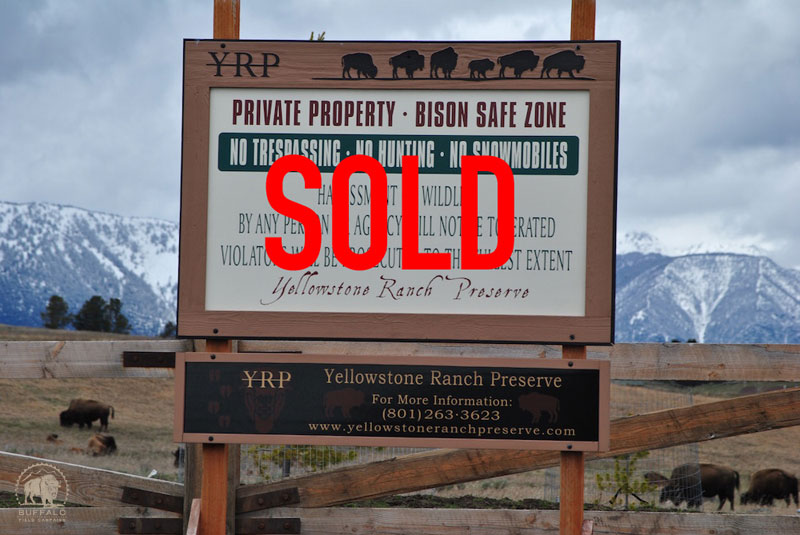
by Deep Green Resistance News Service | Jun 16, 2018 | Biodiversity & Habitat Destruction
Buffalo Safe Zone Sold
by Buffalo Field Campaign
Montana’s largest Buffalo Safe Zone has been sold. The former Galanis property, about 700 acres of lush green grass and rolling hills, was recently bought, and while we don’t know exactly how the new owners feel about the buffalo, the large “Bison Safe Zone” sign has been removed. The caretaker has contacted us to say that we are no longer welcome there, and we fear that this may mean the same for the buffalo. This is *critical* habitat that the buffalo from the imperiled Central herd use winter and spring, one place they are safe from any harm, and they are devoted to this land which is part of their calving grounds. The Galanis family — incredible champions of the buffalo — are devastated that they have had to let this land go. It’s a heavy blow to all of us. But, we still don’t know for sure how things may or may not change. Perhaps the new owners will understand the tremendous support and fierce loyalty the buffalo have from all the surrounding neighbors and others throughout the West Yellowstone community, and keep things as they are.

Wenk Forced out by Secretary of Interior Zinke
On the federal level, Yellowstone’s superintendent, Dan Wenk, has been ousted by Secretary of the Interior Ryan Zinke. Though wrongfully touted by some “green” groups as a “bison protector”, Wenk had, apparently, been in dispute with Zinke over the number of wild buffalo — the country’s national mammal — who should exist in the Park. The controversial Interagency Bison Management Plan, crafted in the interests of ranchers, places a political cap of 3,000 on the buffalo population. A number not supported by science, ecology, or any form of logic. Yellowstone National Park alone can sustain upwards of 6,500 buffalo, while the surrounding lands of the Greater Yellowstone country could support at least 20,000. For a population who once existed in the tens of millions, this is still a minuscule population size. Yet, Zinke — a Montana cattleman — wants to drive the endangered population down to a mere 2,000.
Zinke, a corrupt Trump appointee, is a known enemy of the earth, a strong champion of industry and corporations who has oil & gas, timber, mining, and ranching advocates salivating. It’s no surprise that, being from Montana, his attention would turn to the wild buffalo of Yellowstone with an aim to cause them greater harm.
For nearly 30 years Park Superintendents have played a lead role in slaughtering buffalo inside Yellowstone National Park. Some have expressed regret, like Mike Finley. Wenk is just the most recent of several superintendents behind the National Park Service’s ongoing slaughter of our last wild buffalo.
That being said, the reality is, Wenk has hardly been a champion of the buffalo. Thousands of the country’s last wild buffalo — the beloved Yellowstone herds — have been shipped to slaughter from within Yellowstone, brutally treated, hazed, domesticated, and otherwise harmed with Wenk standing as Yellowstone’s superintendent. For all the years he’s been in office, he has bent over backwards to serve Montana’s livestock industry, destroying imperiled wild buffalo. It has only been in recent months — after Yellowstone’s trap was attacked four times — and public pressure against the buffalo slaughter has been mounting — that he has started to come out advocating for wild buffalo to be managed as wildlife, and that the livestock industry should not be the ones to dictate how buffalo live or die.
Too little, too late. Actions speak much louder than words, and Wenk’s hands are covered in buffalo blood no different than Zinke’s aim to be. Not only that, but a 50-year wild buffalo domestication / commercialization program has been approved under Wenk’s “protective” leadership, which has already resulted in dozens of buffalo being slaughtered or confined for life.
Will it be worse without him as Superintendent? We simply need to grasp that this whole system is broken and we must stand in solidarity and fight back harder. Zinke has made it clear that the war against the country’s last wild buffalo — our national mammal — is escalating. With our sites aimed straight and true, we stand up even stronger for the wild.



